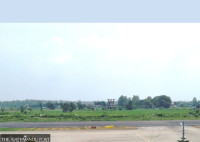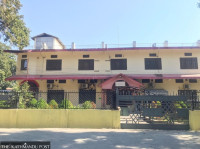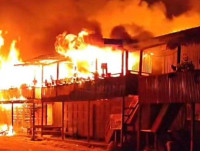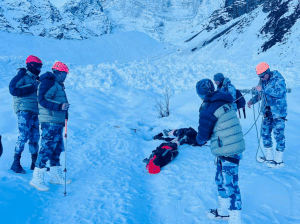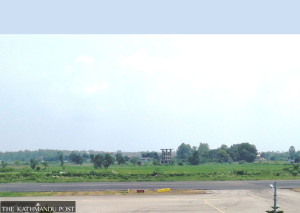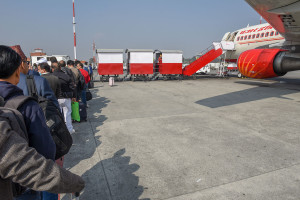National
For this season’s Everest climbers, it’s all systems go—except the weather
Heavy footfalls are expected on Mount Everest this spring, as a record 374 fee-paying climbers—12 of them Nepalis—have been cleared to scale the world’s highest peak. And given the erratic weather pattern this season, many climbers are concerned that they could be left with a small window to make it to the top, and face a traffic jam during the final days of ascent.
Sangam Prasain
Heavy footfalls are expected on Mount Everest this spring, as a record 374 fee-paying climbers—12 of them Nepalis—have been cleared to scale the world’s highest peak. And given the erratic weather pattern this season, many climbers are concerned that they could be left with a small window to make it to the top, and face a traffic jam during the final days of ascent.
Ang Tshiring Sherpa, former president of Nepal Mountaineering Association, said considering a large number of Everest aspirants waiting for a chance to mount a bid for the summit, a “traffic jam” on the slopes cannot be ruled out this year.
“It will depend on weather. If the weather does not behave well, all climbers could scramble to climb the peak during a short weather window causing a traffic jam,” he said.
An official at the Meteorological Forecasting Division told the Post that they don’t forecast multi-day weather event and are not able to predict the changes in weather pattern in May.
[Read: This is what it takes to get a foreigner to Everest]
Normally, there is a two-week window for the summiteers to complete their climb before monsoon begins. But as weather conditions continue to fluctuate, some summiteers say the climbing window could get even narrower, pushing them to attempt the climb within a week, and increasing the chances of a traffic jam.
A traffic jam is potentially dangerous particularly at the Hillary Step, a vertical rock face at 8,790m, which many climbers said was dislodged in the 2015 earthquake. This is the last steep challenge, when exhausted climbers are forced to wait there for several hours, awaiting their turn to climb up or come down on a single rope.
According to the Department of Tourism, the authority that issues climbing permits, this year has the highest number of climbing permits issued for Everest in a single season.
“Applications have stopped coming but we have estimated that the number of fee-paying Everest aspirants could reach 380 this season,” said Surendra Thapa, spokesperson for the department. “With each climber hiring at least one local climbing guide, the total number of individuals on the mountain may reach 1,000 this season,” he said.
 Climbers acclimatise at Camp II during their expedition bid. Photo Courtesy: Diki Sherpa
Climbers acclimatise at Camp II during their expedition bid. Photo Courtesy: Diki Sherpa
Normally, permits are issued until April-end.
The highest number of climbers are from India (87), followed by the United States (68) and China (62) and the United Kingdom (42).
Climbing will start from mid-May, and the mountaineers have already started spending time on the lower reaches of the Himalaya acclimatising themselves.
During the final phase of ascent, climbers are exposed to risks of thin air and many could run out of oxygen as well.
In May 2012, four climbers—Ha Wenyi from China, Eberhard Schaaf of Germany, Nepal-born Canadian Shriya Shah and South Korean mountaineer Song Won-bin—died from exhaustion and altitude sickness while descending from the summit.
An estimated 150 climbers had left for the summit on a single day—May 18, 2012, that had caused a traffic jam on the tallest peak in the world.
One of the reasons Everest sees a huge number of climbers is the fee they pay to the government and the money they spend. Foreigners pay $11,000 to obtain the climbing permit and spend between $40,000 and $90,000 to climb Everest. As all expenditures are non-refundable, climbers scramble to climb the peak at any cost, which often could lead to overcrowding on top of the world.
Some climbers say that they don’t anticipate a traffic jam this spring because of a fixed climbing timetable for each expedition. “To avoid traffic jams, there is a mechanism in place. Climbing leaders and high-altitude guides meet and fix departure timetables for each team,” said Kami Rita Sherpa, one of the most experienced climbers who plans to break his own record by scaling Everest for a 23rd time this season.
Despite the risks, the number of climbers continues to grow every year, and for Nepal, that’s at least a positive news. According to the department, it collected Rs436 million in royalty by issuing climbing permits for Everest alone. The climbing season also generates hundreds of well-paying jobs.

Photo Courtesy: Pasang Tenzing Sherpa
“As climbing Everest has become much safer with improved climbing gears and weather technology, the number of people who apply for a permit has been rising,” said Thapa.
According to the department’s statistics, 863 individuals were issued the climbing permits last year, including 349 fee-paying climbers and 514 high-altitude climbing guides. A record 563 people, including 261 fee-paying climbers, stood atop the hallowed peak. The high-altitude climbing guides do not need to pay climbing fees.
For the last three years, the success rate of climbing Everest has averaged at 70 percent.
In 2015, 356 mountaineers had acquired climbing permits. But there were no Everest bids in the spring of 2015, due to avalanches set off by the devastating April 25 earthquake that killed 20 climbers, including guides and helpers at the base camp. The government had then extended their permits for two years until 2017.
According to the expedition organisers, icefall doctors mobilised by the Sagarmatha Pollution Control Committee have already opened a climbing route from base camp to Camp II (6,400m).
“Climbers have started acclimatising up to camp II after the route was opened,” said Mingma Sherpa, chairman of Seven Summit Treks, one of the leading expedition companies. “We are expecting the first climb to take place on May 10 if the weather behaves well.”
The climbing time from base camp (at 5,364 metres) to Camp I (5,943 metres) is five hours. The Khumbu Icefall, the most treacherous part of the route, lies between these two camps.
Most of the climbers try to cross the Khumbu Icefall during the early morning, before the sunrise. As sunlight warms up the ice, the chances of crevasses opening up or ice blocks falling become much greater.
It takes four hours to reach Camp II (6,400 metres) from Camp I, which expeditionists describe as the most exciting and easiest part of the route. From Camp II to Camp III (7,162 metres), the average walking time is seven hours, while from Camp III to Camp IV (8,000 metres) or South Col, the average walking time is nine hours.
It is the Camp IV from where, climbers say, the ultimate thrill begins, as it is the last point from where the Everest push starts. It takes climbers up to 10 hours to reach the summit (8,848 metres) from Camp IV. Normally, the summit push begins at 11 pm or midnight, so that climbers can reach the summit and begin their descent during the day.
Expeditionists said the difficulty level of climbing would depend also on whether the snow up in the region is fresh or frozen.
“The winter season dropped large amounts of snow on Everest areas and if it’s frozen, it could make climbing relatively easy,” said Ang Tshiring. “But if there is fresh snow, it could make climbing difficult.”




 11.12°C Kathmandu
11.12°C Kathmandu

